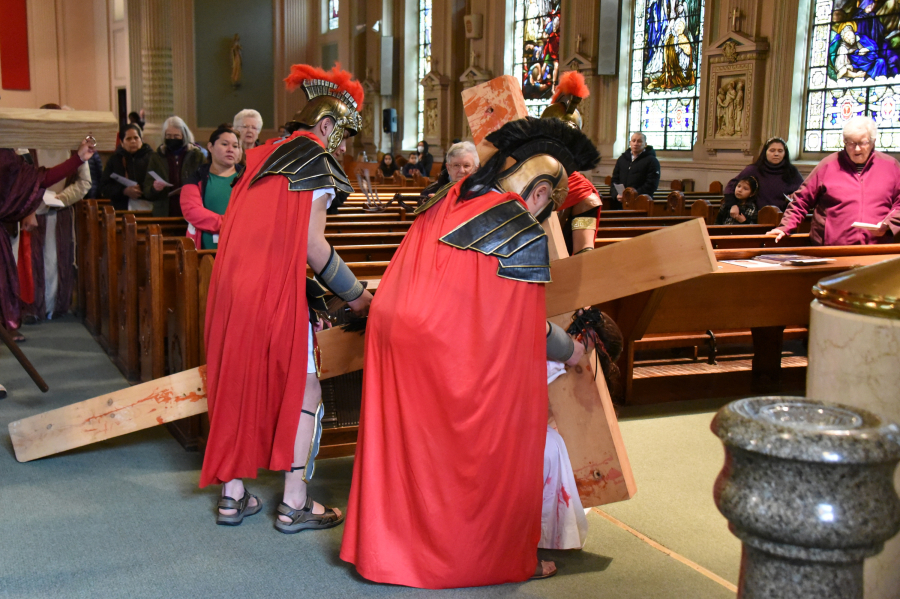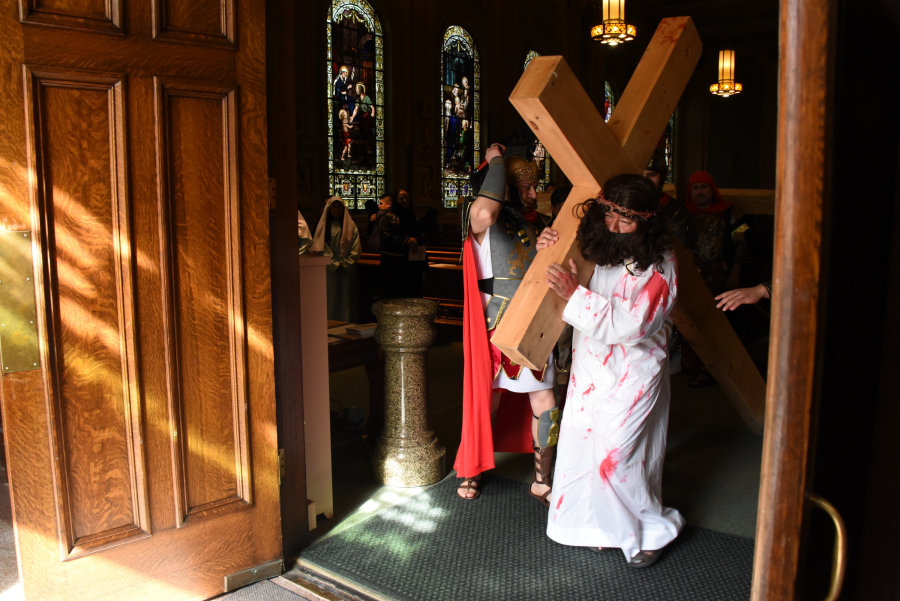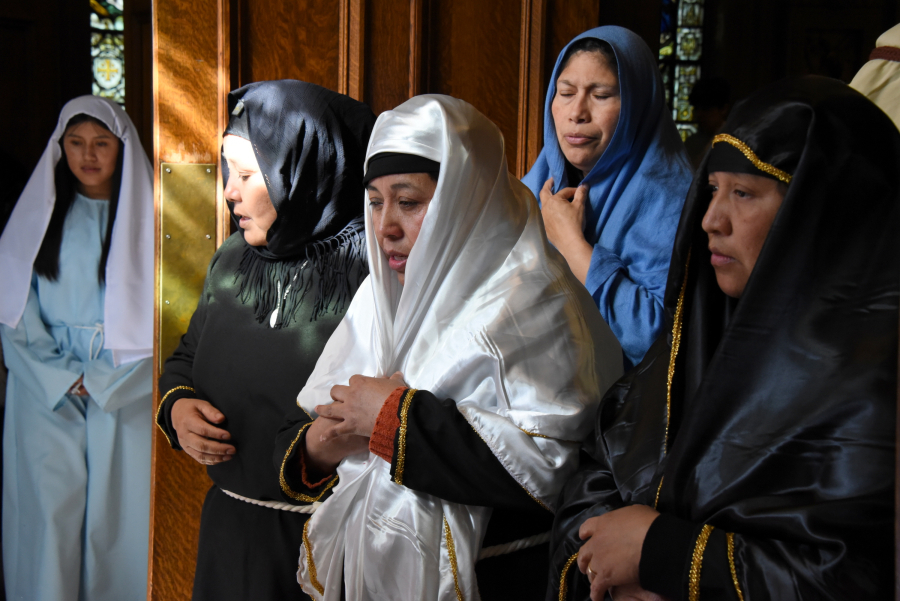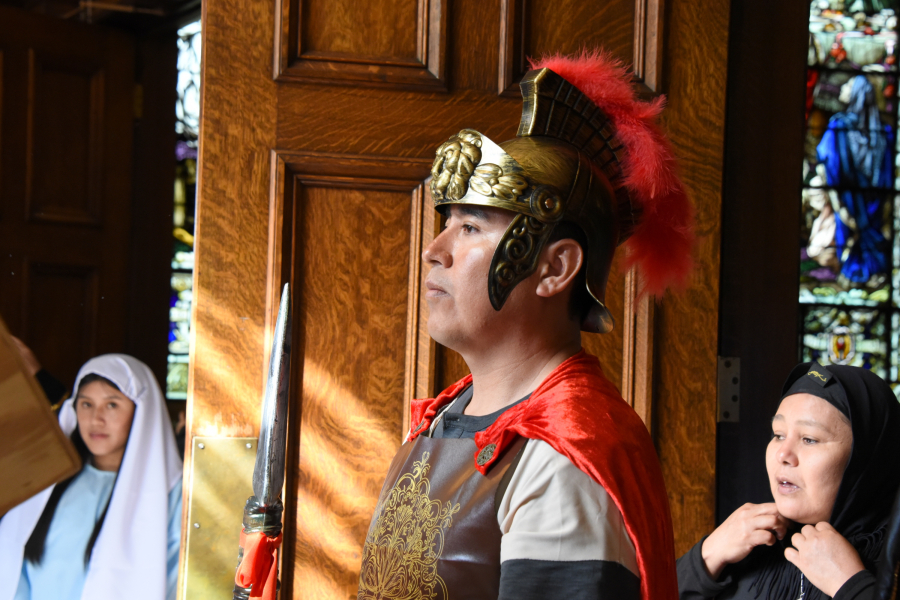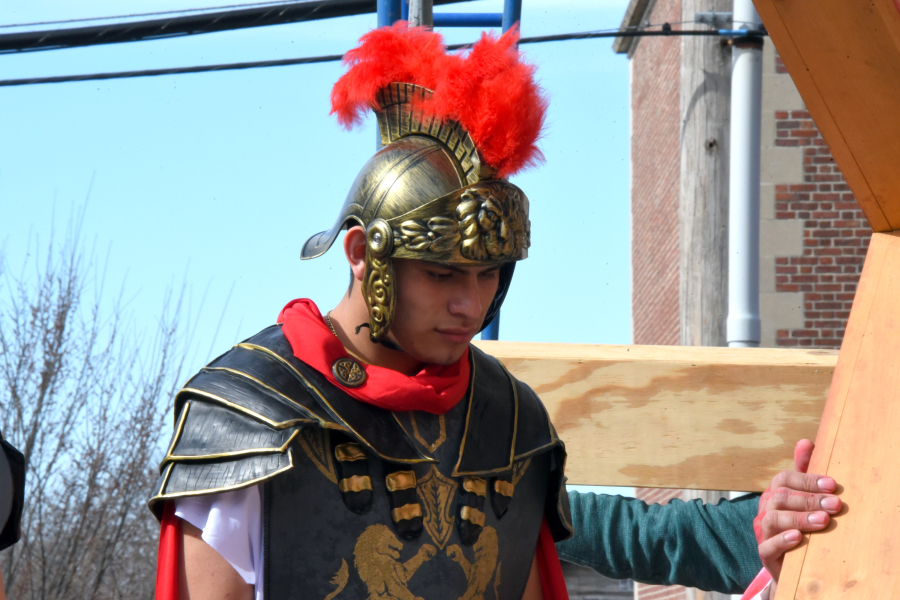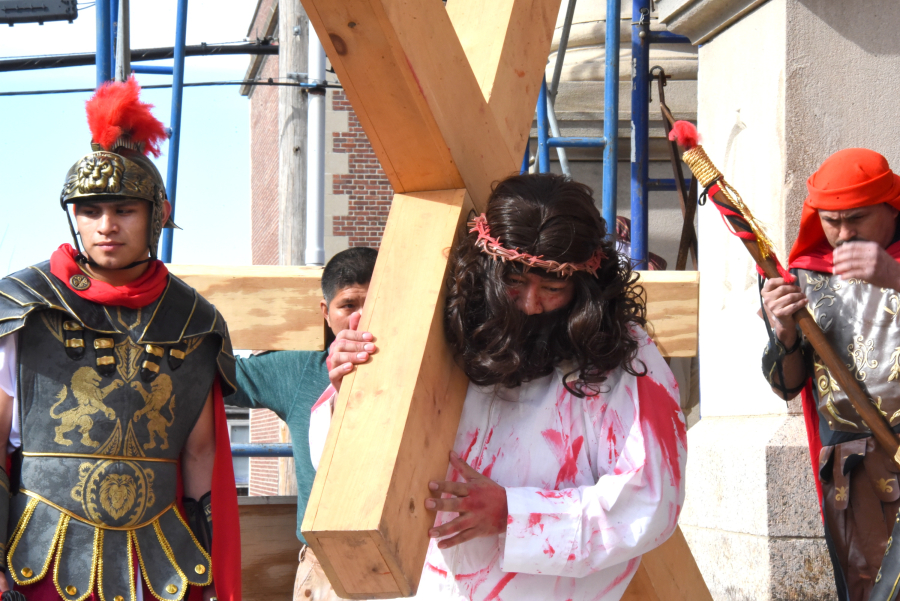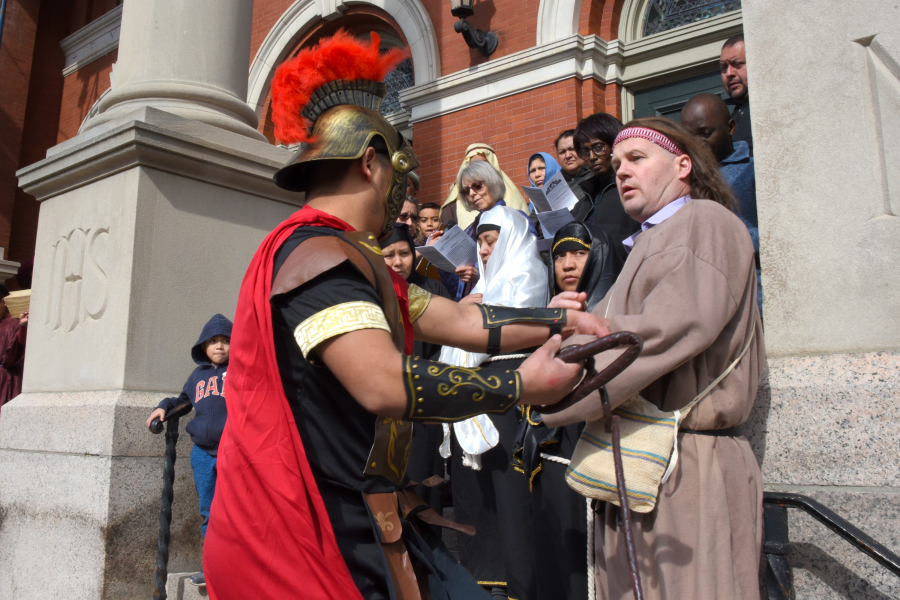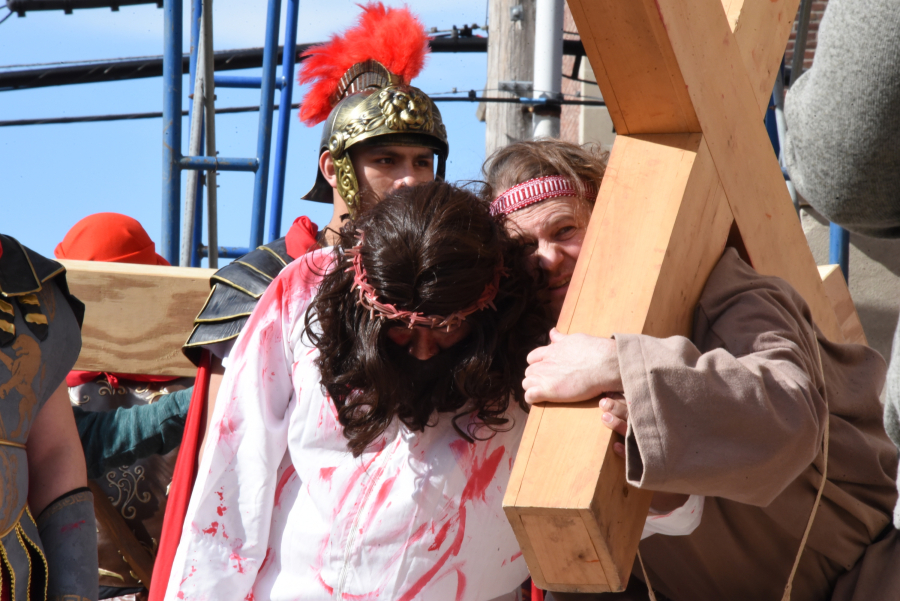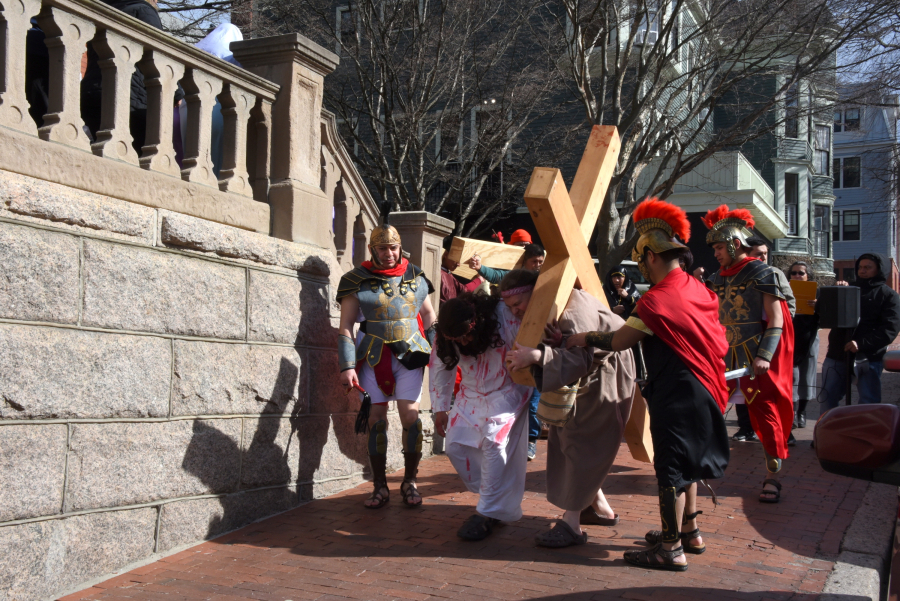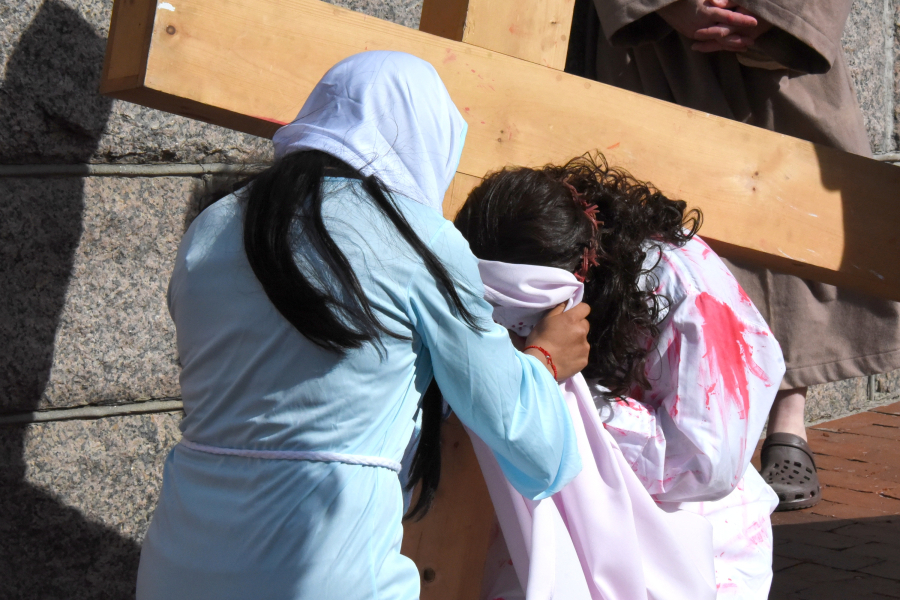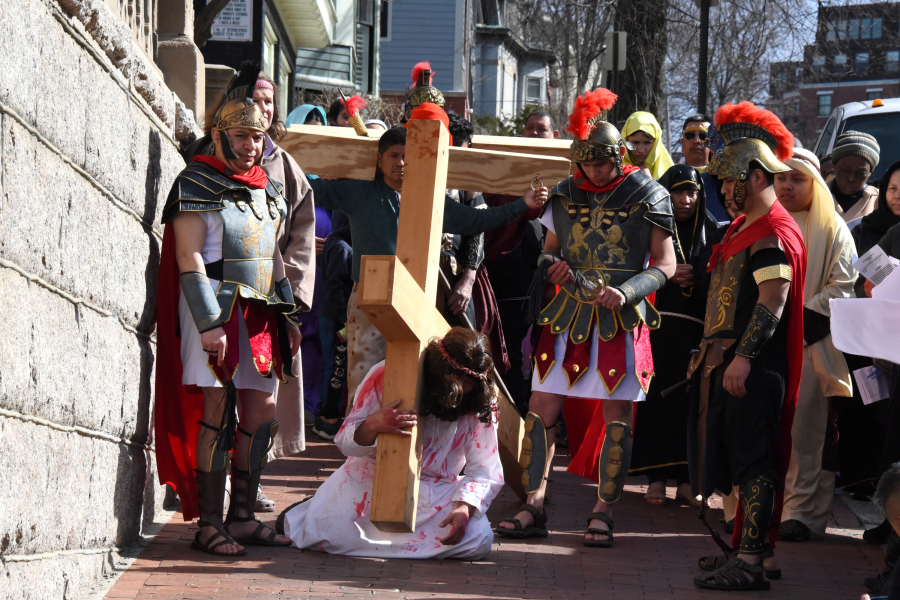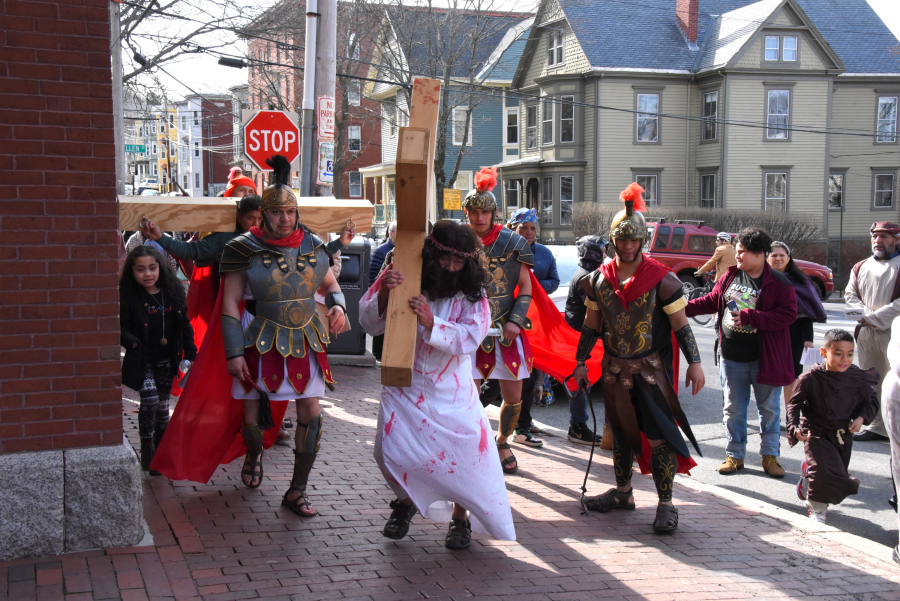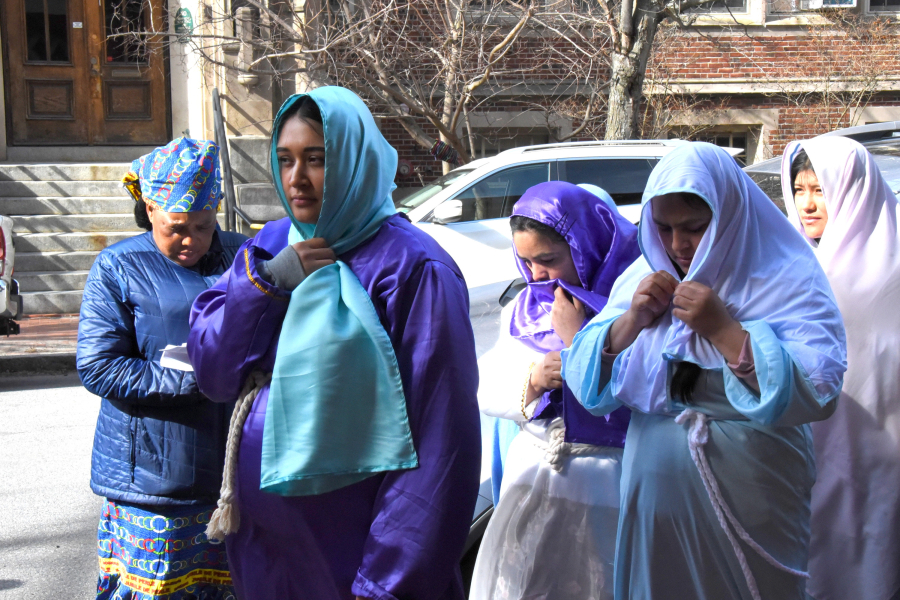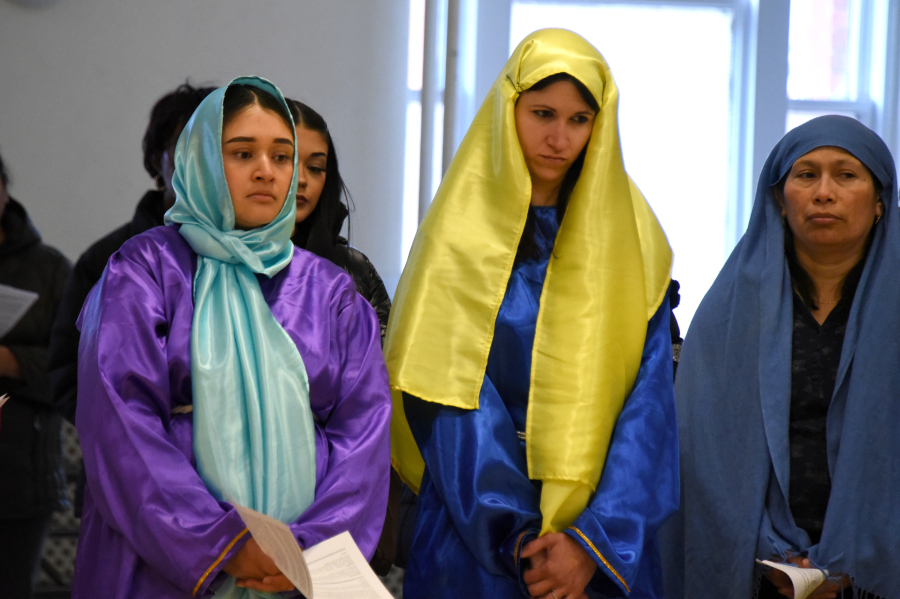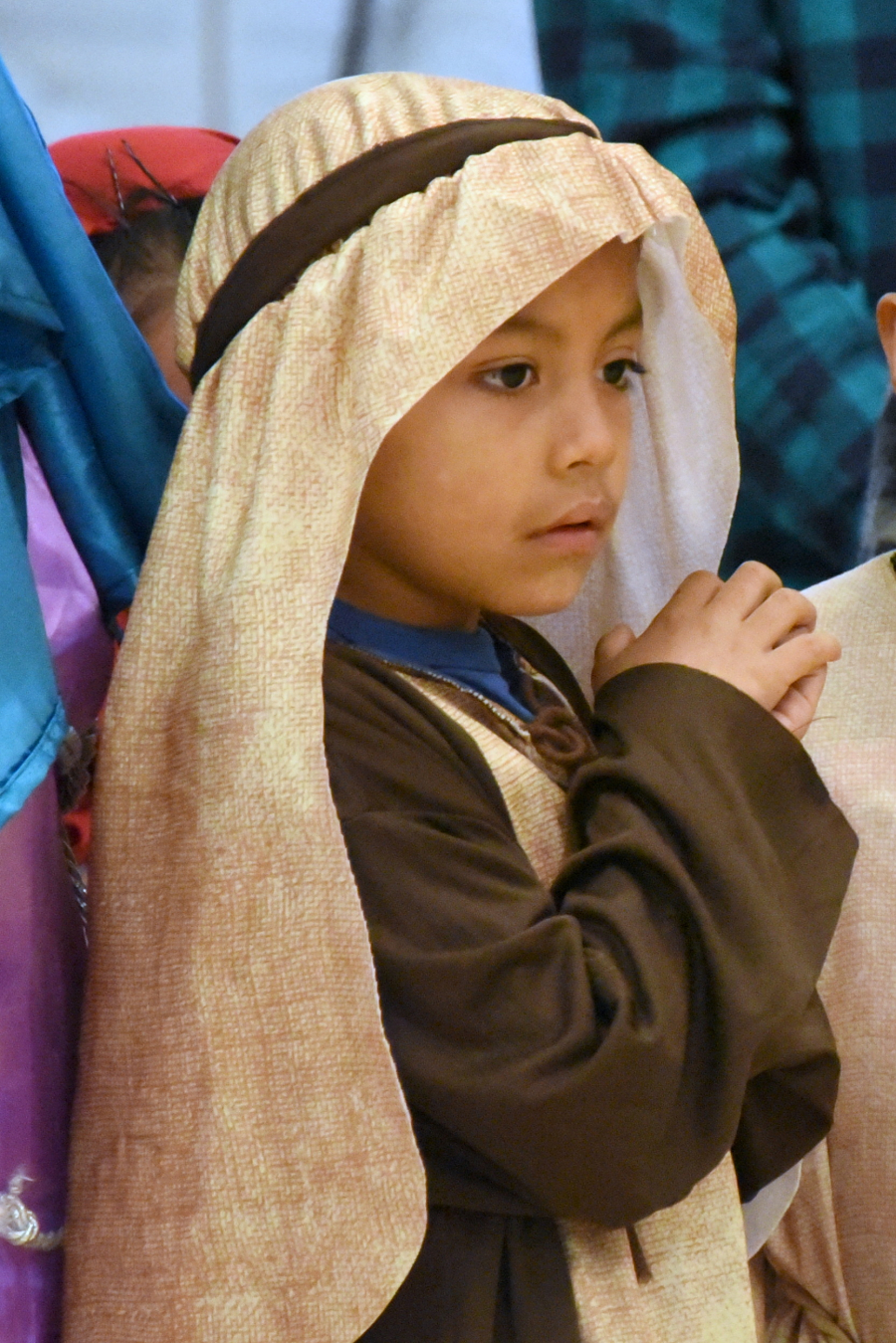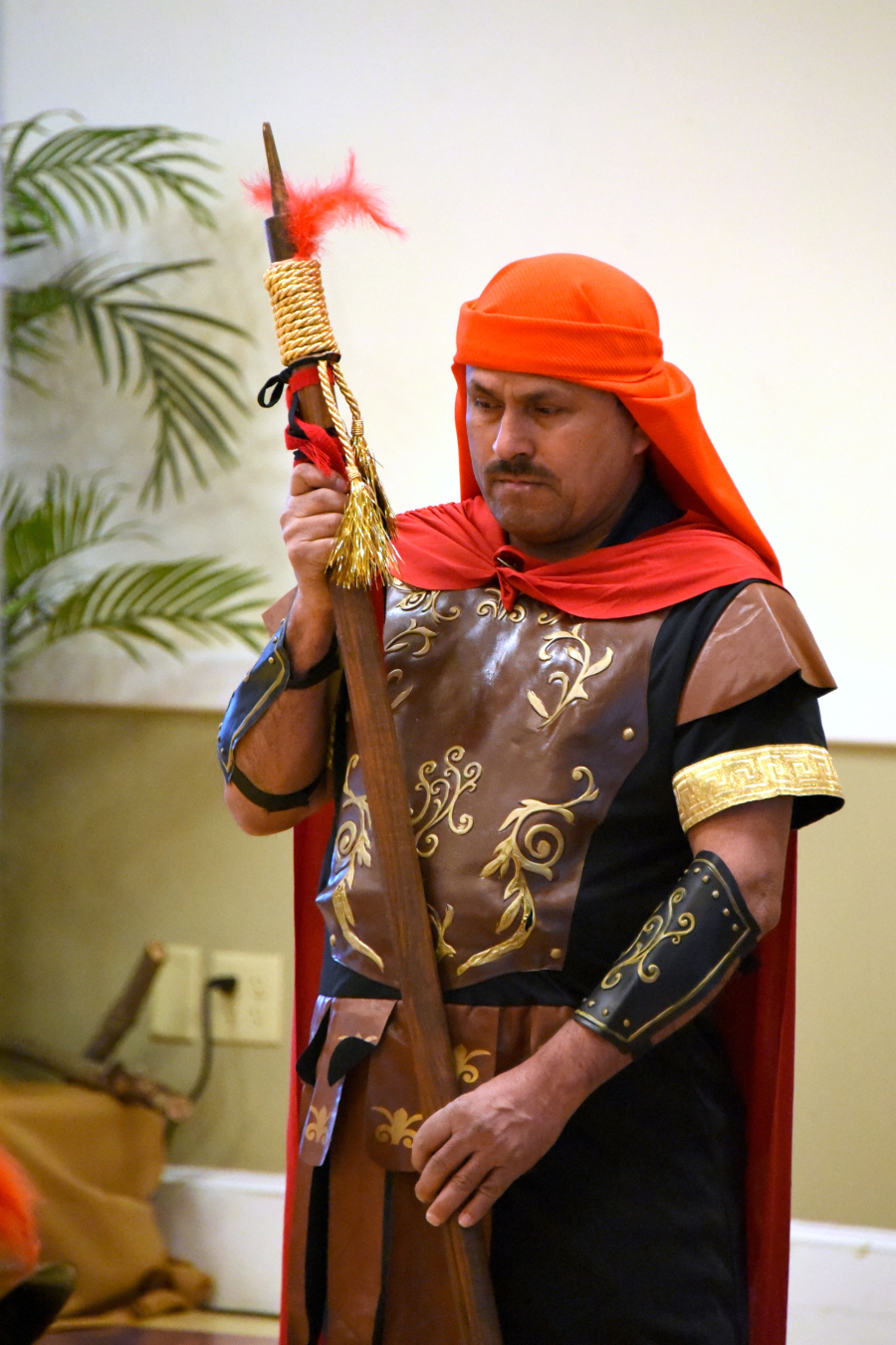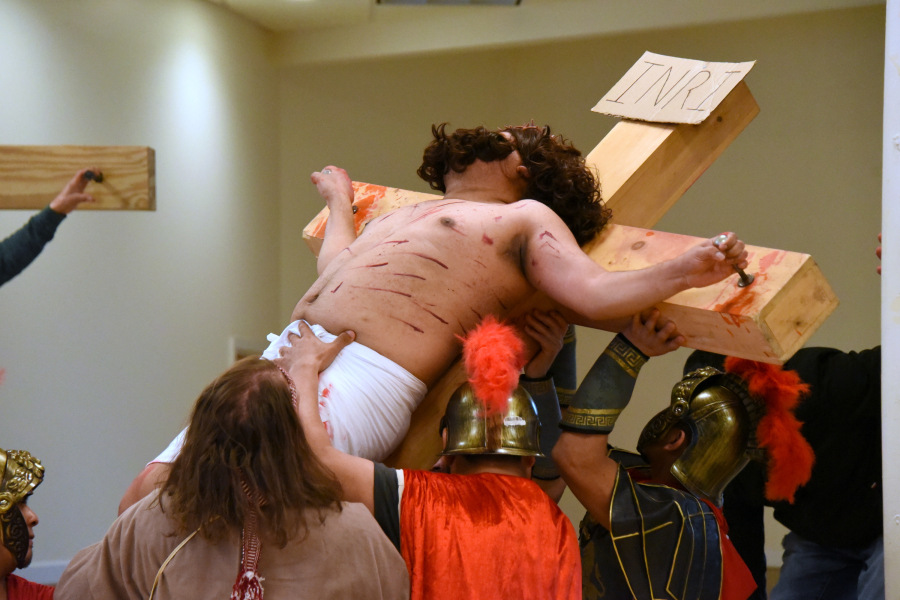Multilingual Living Stations of the Cross Presented in Portland on Good Friday
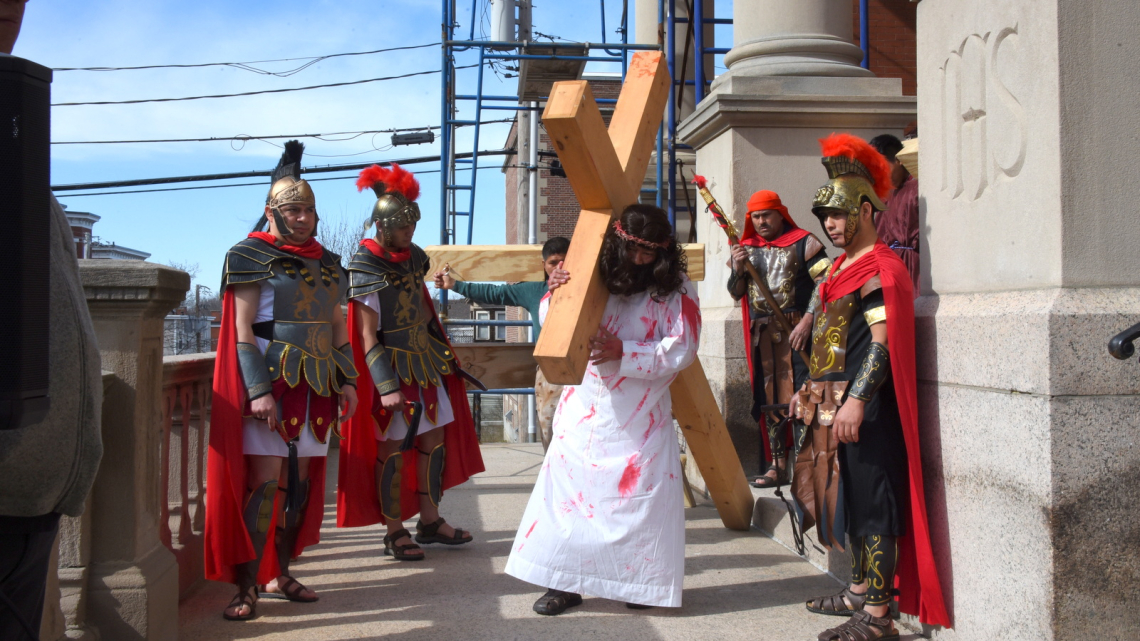
A longtime Good Friday tradition returned to Sacred Heart / St. Dominic Parish on April 7, as parishioners presented the Living Stations of the Cross, retracing the final hours of Jesus’ life and his journey to Calvary.
The reenactment, which included prayers and meditations, was offered in three languages: Spanish, French, and English, representing the diverse population served by Sacred Heart / St. Dominic. However, it originated with members of Maine’s Hispanic community, some of whom traveled from as far away as Cherryfield, Waldoboro, and Lewiston to attend.
“It’s important because it helps us to remember the Passion of Jesus Christ and helps us to feel what Jesus felt at that time,” said Milka Alay, from Waldoboro, who portrayed a woman from Jerusalem in the reenactment. “I wanted to feel like the women of Jerusalem felt at that time.”
Alay was among dozens of men, women, and children dressed in period costumes who participated in the Living Stations of the Cross, which began inside Sacred Heart Church with the condemnation of Jesus, a role portrayed by Cesar Lopez.
Surrounded by soldiers, he then carried the cross down the center aisle of the church, falling for the first time as Jesus did, then meeting his mother, Mary.
The Stations of the Cross continued outside the church, eventually concluding inside the parish hall, where Jesus was nailed to the cross and crucified and his body then placed in a tomb, which had been made by parishioners.
Reenacting the Way of Cross, particularly on Good Friday, is a strong faith tradition in many Latin American countries. Sister Elsa Telón, RSR, a member of the Diocese of Portland’s Hispanic Ministry team, said that is because many of the families face hardships, such as poverty or illness, and they relate to the sufferings of Jesus and feel, especially at this time, that they can turn to him.
“They believe that Jesus helps them in their situations or the situations that their families live in in their countries, and they like to share those pains with Jesus and get comfort at the same time, because Jesus comforts them,” she said
Esperanza Jimenez, who were among dozens who gathered to witness the presentation, said she wanted to attend because of her strong belief in God.
“It’s important because I am sure that this is the Church of the Christ, and I want to follow it,” she said.
Sister Mirian Maradiaga, RSR, said the Easter Triduum, which includes Holy Thursday, Good Friday, the Easter Vigil, and Easter, is a very meaningful time for Hispanic Catholics, so much so that they’re lives become centered on it.
“In our culture, people don’t work Thursday and Friday and Saturday and Sunday because there is a strong desire to go to church. Many, many people go to church during Holy Week,” she says.
“It’s a time to be together like a family,” added Sister Elsa.
This is the first time the Living Stations of the Cross have been presented at Sacred Heart Church since the pandemic. While the tradition began with the Hispanic community and was traditionally offered only in Spanish, it is now offered in three languages because the church is also home to many immigrants from central Africa where French is spoken. Sacred Heart offers Sunday Masses in Spanish as well as in French/English.
The Stations of the Cross is a devotion that goes back centuries. It first began when pilgrims would journey to Jerusalem to retrace the final steps of Jesus, but then, spread to other countries, allowing Christians who were unable to go to the Holy Land to participate in them.






